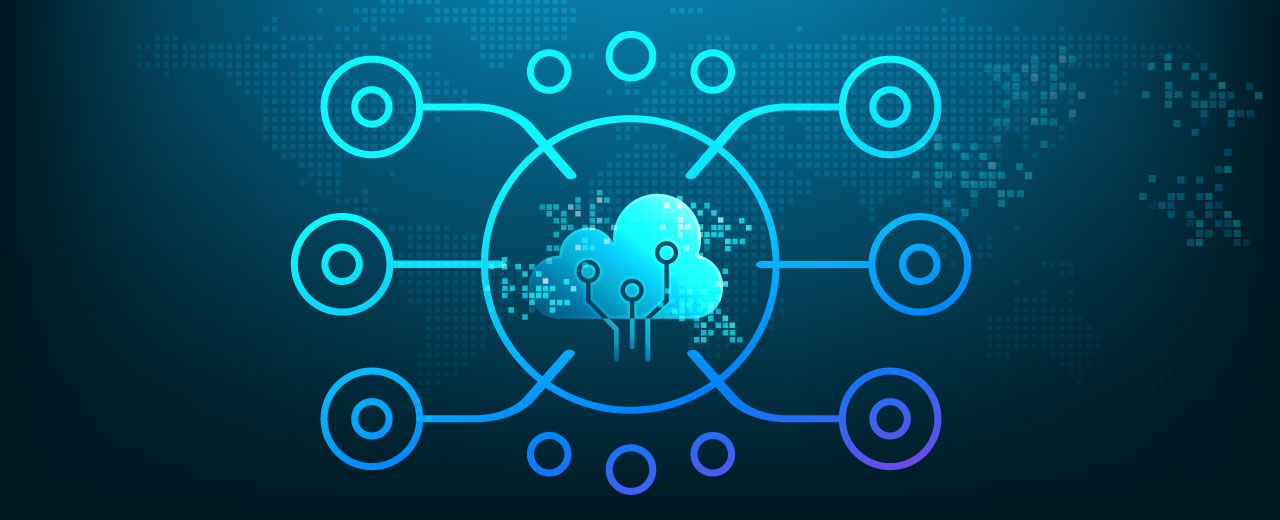Are you ready for edge computing? If you're not sure what it's all about, then our quick guide will help you to peer over the brink. You may love what you see.
What is edge computing?
For years now, cloud computing has dominated IT. But the weather is changing in some corners of the business world.
Cloud computing relies on computing processes happening at data centres globally. The information you send and receive makes a huge journey.
That's fine for the world we've known so far. But imagine if the amount of data needing to be processed was to snowball dramatically?
Take, for instance, the fact that the number of Internet of Things (IoT) connected devices is predicted to increase to more than 75 billion worldwide by 2025 — a fivefold jump in 10 years.
Just think about the Internet traffic involved, the soaring costs and the security implications?
But that's not all. There's latency. Most of us don't mind if Siri or Alexa pause slightly before answering us (as if they're checking their Instagrams on the sly). However, processes that provide instant insights may require a much faster response than the cloud can deliver comfortably.
That's where edge computing excels.
In simple terms, edge computing means fewer processes happening in the cloud. Instead, data is processed, analysed and stored closer to where it's gathered. This happens at the edge of your network, possibly on mobile computing devices, IoT systems or a standalone edge server (or a small cluster) at the borders of your company's IT.
Edge computing won't spell the end for the cloud. Data will still be stored in the cloud. But much of the intense processing will happen locally where it's faster and cheaper — and where you're always connected.
What is edge computing used for?
For a growing number of businesses, edge computing is a key part of their digital transformation strategy — supporting the kind of breakthrough tech they plan to be exploiting.
The most obvious use of edge computing is self-driving cars. You can't feed data from multiple sensors around your vehicle into the cloud and get back instant driving adjustments in a consistent way. But edge computing will make it possible to jam on the breaks immediately when a cat runs out in front of you.
If you want to dive deep into the tech, watch this video about Uber ATG’s self-driving cars that use edge computing.
We can also expect edge computing to power other artificial intelligence innovations and machine learning, as well as virtual and augmented reality and video games. If smart responses are needed quickly — based on fast-changing data — then edge computing is the way to go.
There are countless other applications for edge computing. These include how data is handled from oil rigs, wind turbines and factories. Edge computing will prove valuable for real-time inventory checking, benchmarking and predictive analytics.
NVIDIA is one of the companies pushing edge computing. This video shows what's possible — how augmented reality can guide fire-fighters through a building, design robots to work alongside humans and enable a grab-and-go shopping experience.
Edge computing will also make some existing tech-driven innovations more practical and affordable. If your home fills up with countless sensors, smart ovens and other IoT devices, you won't find there's a growing cloud service charge for the privilege.
If you sprinkled your business premises with motion-capture cameras, then you won't have to upload vast quantities to the cloud and pay through the nose for bandwidth and storage. Instead, edge computing might be able to sort out what's important and only upload those sections.
Edge computing is also getting a boost from newer networking technologies. 5G will enable (up to) 10 times faster real-time processing , while Wi-Fi 6— known as 802.11ax — can offer 400% greater capacity and operate well in dense areas such as sports stadiums.
Why does edge computing matter?
Put simply, edge computing will enable our world to do smarter things, faster. As more data-creating, processor-hungry tech appears, we won't be held back by the limitations of the cloud.
Edge computing should also enable companies to avoid runaway cloud costs. For example, operating AI on a user’s device will be cheaper as well as faster. This will make more breakthrough ideas affordable.
Stronger security could be another advantage. On the one hand, it's true that edge computing devices could widen the surface area exposed to threats, including tampering. But it can limit how much company data gets into the public cloud. Also, mobile devices such as the iPhone have shown how security and privacy can be handled comfortably at the edge.
Let's talk edge computing
At Vohkus, we help our customers to stay one step ahead using leading technology, applied in the best way. Contact our expert team and we'll be glad to discuss your business challenges and opportunities.

